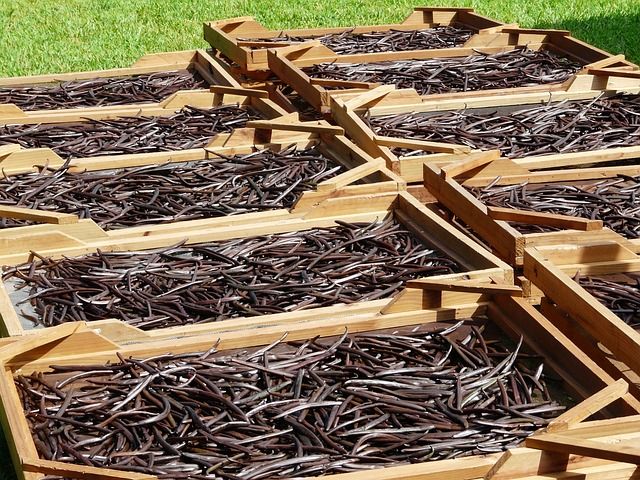
Probably the average grocery shopper is unaware there are two sources of the flavor of vanilla. They are vanilla and vanillin. Are they the same? Are they different? If they are different, what is that difference?
Vanilla and Vanillin
Historically, our favorite ice cream flavor has been vanilla. To draw special attention to the use of natural rather than synthetic ingredients, some have added descriptors to their ice cream. They use phrases like natural vanilla or natural vanilla bean.
The vanilla bean comes from an orchid, and is completely natural. The flavor extract made from it is called vanilla. Yes, the word that ends in an “a,” and not an “n.” We still have vanilla and vanillin. So what is vanillin?
Vanillin
To understand vanillin, it is important to realize that vanilla as a natural product consists of a number of organic compounds not just one. However, its major component is 4-hydroxy-3-methoxybenzaldehyde. The chemical structure of this component is written:
What is the Chemistry?
What is the chemistry utilized in the manufacture of synthetic vanillin? There is any number of ways to prepare vanillin. One historically important method was to derive it from guaiacol, utilizing potassium hydroxide and chloroform. The net reaction involves addition of an aldehyde group (-CHO), as shown below.
By Way of Comparison
Although the compound vanillin is identical to the major component found in the vanilla bean, this does not make the two interchangeable in flavor. There are hundreds of compounds in vanilla, just as there are in natural strawberry. Yet, artificial strawberry offers a flavor most would agree is unlike that of natural strawberry.
Note: You might also enjoy Cochineal Red Dye from Bugs
References:
- Rainforest Spices: Learn about Vanilla
- International Journal of Farming and Allied Sciences: Oxidative Production of Vanillin from Industrial Lignin…